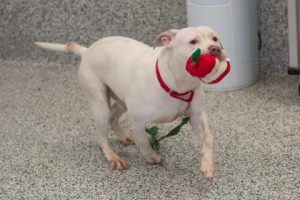We are lucky to have an abundance of farmers markets and
other sources for local produce in our area, but it can be a lot of fun to grow
your own vegetables and it can make good economic sense as well. Here are two
novel ways to bring vegetable gardening into your life.
Edibles in the landscape
If you went to the Philadelphia Flower Show, you may have noticed that many of
the exhibits included vegetables planted right in amongst the flowers. Some
vegetables are downright pretty, so why not use them as ornamentals instead of
banishing them to a regimented rectangular plot in the backyard?
When vacationing in the French Alps, I was surprised to
see Swiss chard used routinely as decorative foliage in municipal planters
along the streets. Oddly enough, the cuisine in that area, while delicious,
centers almost entirely on potatoes, smoked meats, mushrooms, and cheese. After
about five days of this unvarying diet, I wanted to yank the chard right out by
its roots and scream “don’t you people know you can EAT this?” But then I
realized no one spoke English and there’s no telling what they might think I
was saying, so I just stayed quiet and helped myself to another spoonful of the
tartiflette.
Herbs are a natural in the flower garden. Not only are
many ornamental, but the smell and taste that make them appealing to us often
steer deer away, so they can actually act as a deer repellent. There are many
appealing shapes and textures among the herbs, from the soft and silvery sages
to the airy and butterfly-attracting dills and fennels.
Here are just a few vegetables and herbs to consider
including in your flower garden: lettuces (many shades of green, red, and
purple are available), Swiss chard, dill, fennel (bronze fennel is particularly
attractive), cherry tomatoes, peppers (there are a number of ornamental
varieties), berries, basil (particularly purple basil), sage, eggplant, fruit-producing
shrubs and trees, and asparagus (for its fern-like foliage). There are even
some edible flowers, such as nasturtiums.
For more information on edibles in the landscape, go to:
http://ohioline.osu.edu/hyg-fact/1000/1255.html.
A few words of caution: if you are going to eat plants
from your garden, be very cautious with pesticides (or avoid them altogether).
And obviously, be careful what you are picking. Some garden plants, such as
foxglove and monk’s hood, are highly poisonous.
Vegetables in Containers
This approach is perfect for those with limited space but also makes sense for
singles and small families that want to avoid the “what else can we do with all
this zucchini” problem. Vegetables that perform well in pots include tomatoes,
peppers, eggplant, and cucumbers. Herbs and lettuces, radishes, and greens such
as Swiss chard and kale also work very well. Root vegetables such as carrots,
turnips, and beets are not as well suited for containers, but nearly any
vegetable can be grown in a container with some effort.
Start with a large container. For a tomato plant, you’ll
need at least a 20” diameter pot; for single pepper, eggplant, or cucumber
plants, 14” may be large enough. The container should have plenty of drainage
holes and be deep enough for the large root systems. Use good quality potting
media designed for large containers (they will contain coarse material such as
bark or coir), or make your own. Texas A & M recommends mixing
horticultural grade vermiculite, peat moss, limestone, superphosphate, and
garden fertilizer. To one bushel each of vermiculite and peat moss, add ten
tablespoons of limestone, five tablespoons of 0-20-0 (superphosphate) and one
cup of garden fertilizer such as 6-12-12 or 5-10-10. Mix the material
thoroughly, adding a little water to reduce dust. Wet the mix thoroughly prior
to seeding or transplanting.
Even if the media contains fertilizer, you should
fertilize vegetables on an ongoing basis. For fruiting vegetables such as
tomatoes, eggplants, or cucumbers, it is important that the fertilizer be high
in potassium but low in nitrogen (unless you want a lot of greenery and no
vegetables). A good organic choice is a combination of fish emulsion, kelp
meal/extract, greensand, and bone meal.
Keep your containers watered (they may need to be watered
daily or even twice a day in very hot weather). It may help to keep them in a
sunny spot near the house. That way, you can keep an eye on them and easily
harvest the vegetables whenever you want.
Here’s a link to more information on vegetable gardening
in containers: http://aggie-horticulture.tamu.edu/extension/container/container.html.
A parting thought: whether you are using edibles in the
landscape or growing vegetables in containers, keep in mind the cardinal rule
of “right plant, right spot.” Vegetables need a lot of sun, blueberries need
acid soil, and fruit trees need room to grow. Be just as careful matching
edible plants to their location in the garden as you are with your ornamentals.
Visit the Chester County Master Gardeners at the Delaware
Center for Horticulture Private Gems Garden Tour, June 19. They are featuring
several Chadds Ford gardens. For more information, call (302) 658-6262.
Have a gardening question? Ask a Master Gardener! Call the
Master Gardener Hotline: 610-696-3500 or email ChesterMG@psu.edu. Become a fan
of Chester County Master Gardeners on Facebook.
• Nancy Sakaduski is the Chester County Master Gardener
Coordinator. Master Gardeners are trained volunteers who educate the
public on gardening and horticultural issues. In Chester County, they
operate through the Penn State Cooperative Extension office in West
Chester. Nancy lives in Pennsbury Township. She can be reached at
nds13@psu.edu.
About Nancy Sakaduski
Nancy Sakaduski is a Master Gardiner with Penn State Extension of Chester County.





Comments